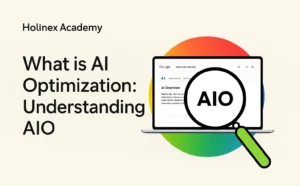As a digital marketer, you need to understand the factors that determine the performance and cost of your Google Ads campaigns. One of the most important factors is Quality Score. Quality Score is Google’s rating of your ads and landing pages that determines your ad rank and cost per click. The higher your Quality Score, the better your ad rank and the lower your costs. The lower your Quality Score, the worse your ad rank and the higher your costs.
Quality Score depends on three main factors: your click-through rate or CTR which measures how often people click your ad, your landing page experience which evaluates how relevant and useful your landing page is, and your ad relevance which assesses how closely your ad matches what people are searching for. By optimizing these three factors, you can improve your Quality Score, achieve a higher ad rank, and pay less for each click. Understanding and managing your Quality Score is key to success with Google Ads.
What Is Quality Score and Why It Matters in Google Ads
To optimize your Google Ads campaigns, it’s important to understand Quality Score and how it impacts your ad rankings and costs.
Quality Score is Google Ads’ measure of the quality and relevance of your ads and keywords. It’s calculated based on three factors:
- Click-Through Rate (CTR): The number of clicks your ad receives divided by its number of impressions. Higher CTR signals that your ad and keyword are relevant to users.
- Ad Relevance: How closely your ad copy matches the intent behind the keyword. The ad should be compelling and contain relevant information.
- Landing Page Experience: Whether your landing page provides a good experience and matches what the user expects based on your ad. The page should be optimized for the keyword and ad.
A higher Quality Score means your ads and keywords are considered highly relevant, so your ads will rank higher in the auction and you’ll pay a lower cost per click (CPC). A low-Quality Score means your ads are less relevant, so they’ll rank lower and you’ll pay a higher CPC.
Optimizing your Quality Score is key to success with Google Ads. By crafting relevant ads and keywords, creating a great landing page experience, and monitoring your CTR and Quality Score metrics, you can significantly improve your ad rankings and decrease costs. Focusing on Quality Score will lead to a higher return on your Google Ads investment.
How Quality Score Affects Your Ad Rankings
Your Quality Score is one of the most important factors determining your ad’s position and cost in the Google Ads auction. The higher your Quality Score, the better your ad rank and the lower your costs.
Quality Score is calculated based on three components:
- Click-Through Rate (CTR) – The higher your CTR, the higher your Quality Score. Google wants to rank ads that people find most useful and relevant.
- Ad Relevance – The relevance of your ad text and keywords to the search query. Your ad should closely match the searcher’s intent. Use synonyms and related terms for your target keywords.
- Landing Page Experience – The relevance and quality of your landing page. It should have a clear message matching your ad, be easy to navigate, load quickly, and work well on mobile devices.
Improving any of these factors will increase your Quality Score over time through machine learning. Check your account regularly to see the Quality Score for each ad group and keyword. Make changes to underperforming ads and landing pages. You may need to re-work your targeting to better match searchers’ needs.
With ongoing optimization of your account based on Quality Score metrics, you’ll achieve higher ad rankings, lower costs per click, and an improved return on your advertising investment. Focusing on quality and relevance is key to success with Google Ads.
How Quality Score Impacts Your Costs in Google Ads
Quality Score Impacts Your Ad Rank
Your Quality Score is one of the most important factors determining your ad’s rank in the search results page. The higher your Quality Score, the higher your ad will appear on the page, giving it more visibility and a greater chance of being clicked. Google calculates your Quality Score based on factors like your click-through rate (CTR), ad relevance, and landing page experience.
Higher Quality Score Means Lower Costs
A higher Quality Score also means you’ll pay less for each click. Google rewards advertisers with relevant, high-performing ads by charging them less per click. Your actual cost per click (CPC) depends on your maximum CPC bid and your Quality Score. If your Quality Score improves, your actual CPC will decrease even if your maximum CPC bid stays the same. This means you’ll get more clicks for the same budget.
How to Improve Your Quality Score
To increase your Quality Score and lower costs, focus on creating relevant ads and landing pages, and optimizing for higher CTRs. Some best practices include:
- Use targeted keywords in your ad text and landing page content.
- Create compelling ad copy that highlights the key benefits of your offer.
- Design your landing page to be visually appealing and easy to navigate.
- Place important information like product details, pricing, and calls-to-action prominently on the page.
- Track metrics like CTRs, bounce rates, and conversion rates to optimize your ads and landing pages.
- Provide a great user experience to improve your CTR and conversion rates over time.
By understanding how Quality Score determines your ad rank and costs, you can take steps to improve it and gain more from your Google Ads investment. Focusing on relevance, CTR, and user experience will lead to higher Quality Scores, better ad positions, lower costs, and more conversions.
3 Ways to Improve Your Quality Scores
To improve your Quality Scores and lower costs in Google Ads, focus on the following:
Relevance
Ensure your ads and keywords are closely matched to what the user is searching for. The more relevant your ad is to the search query, the higher your Quality Score will be. Some tips to improve relevance:
- Choose keywords that closely match your product or service.
- Include important keywords in your ad text, especially in the headline and description.
- Keep your ad text concise while highlighting the key benefits and features of your offer.
Landing Page Experience
The landing page experience refers to how well your landing page matches what the user expects to see based on your ad. To optimize this:
- Ensure your landing page prominently features the product, service or content promoted in your ad.
- Include a clear call-to-action, like “Buy Now” or “Learn More” that matches your ad’s message.
- Make sure your landing page loads quickly and works well on mobile devices.
Click-Through Rate
Your click-through rate (CTR) measures how often people click your ad after it’s shown. A higher CTR signals to Google that your ad is relevant and useful to searchers. Some tips to increase your CTR:
- Use compelling ad text that highlights key benefits and a strong call-to-action.
- Include prices or discounts in your ad text.
- Test different ad variations to see which one performs best.
- Place your ad in the top position of the page when possible. Top ads tend to get the most clicks.
Optimizing these three areas—relevance, landing page experience and CTR—will significantly improve your Quality Scores over time and lower your costs per click in Google Ads. Continually monitor your account and make improvements to achieve the best results.
Provide strategies for improving Quality Score through ad relevance, landing page optimization, and click-through rates (CTR)
To improve your Quality Score and ad rankings in Google Ads, focus on the following strategies:
Relevance
- Ensure your ads and landing pages are closely matched to the keywords and search queries they target. The content, messaging, and offerings should align with what searchers expect to find based on their query.
- Include prominent keywords in your ad text, especially in the headline and display URL. The closer the match between the keyword and ad text, the higher the relevance.
Landing Page Optimization
- Design landing pages that quickly convey how your product or service satisfies the searcher’s needs.
- Place important information like product details, contact information, and calls-to-action prominently above the fold.
- Ensure a good mobile experience. With more searches happening on mobile devices, your landing page must be optimized for smaller screens.
Improve Click-Through Rates
- Write compelling ad copy that captures attention and interest. Mention key benefits and a strong call-to-action.
- Use eye-catching ad extensions like sitelinks, callouts, and images to make your ad stand out and give searchers more reasons to click.
- Continuously test different ad copy and landing pages to find the optimal combination that generates the most clicks at the lowest cost. Even small changes can lead to significant CTR improvements over time.
By focusing on these key areas of relevance, landing page optimization, and CTR improvement, you can positively impact your Quality Score and achieve better ad rankings and lower costs in Google Ads. Continuous optimization and testing is key to success.
Offer insights into the relationship between Quality Score and ad performance
Quality Score Impacts Ad Performance
Your ads’ Quality Score is one of the most important factors determining their performance and costs. The higher your Quality Score, the better your ads will rank in the search results page and the lower your costs per click (CPC) will be.
Google calculates your Quality Score based on three components:
- Click-Through Rate (CTR): The number of clicks your ad receives divided by its number of impressions. A higher CTR signals to Google that your ad is relevant and useful to searchers.
- Ad Relevance: How well your ad matches the search query. Your ad should contain keywords and phrases from the search to achieve a high ad relevance.
- Landing Page Experience: The quality and relevance of the page your ad leads to. Your landing page should have a clear user experience that matches searchers’ expectations based on your ad.
Improving any of these components will increase your Quality Score, resulting in:
- Higher ad position: Your ads will rank higher in the search results, leading to more impressions and clicks.
- Lower costs: Google will charge you less per click since your ads are performing well. This allows you to get more value from your advertising budget.
- Increased traffic: More people will see and engage with your ads, driving additional qualified visitors to your site.
Monitoring and optimizing your Quality Score on an ongoing basis is key to success with Google Ads. Make incremental improvements to your ads, keywords, and landing pages to achieve and maintain the highest Quality Scores possible. Your ad performance and ROI will benefit as a result.
Google Ads Display Network: Reaching a Wider Audience with Visual Ads
Reach New Audiences with Display Ads
Google Ads Display Network allows you to reach audiences beyond just searchers. You can show your ads on over 2 million websites, apps, and videos across the Google Display Network. This includes popular sites like YouTube, Gmail, and Blogger.
Display ads are image or video ads that appear on websites, mobile apps, and videos. They help raise brand awareness and drive new customers. You can target audiences based on their interests, behaviors, and demographic information. Then, you can choose to show your ads to those audiences as they browse the web or use mobile apps and videos.
Display ads are a great way to:
- Raise brand awareness and recognition.
- Reach new potential customers.
- Drive traffic to your website or mobile app.
- Promote your products and services to a wider range of audiences.
The Google Ads Display Network uses advanced machine learning to optimize your ad placements and show your ads to the right audiences at the right times. You only pay when people click your ad or view your video ad.
Quality Score also applies to the Display Network and is calculated based on your ad’s clickthrough rate (CTR) and ad relevance. The higher your Quality Score, the lower your costs and the higher your ad rank will be. Focus on creating visually compelling ads that are relevant to your target audiences. Keep testing different ad creatives to improve your CTR and Quality Score over time.
With the power of the Google Ads Display Network, you can achieve your marketing goals and drive real business results at scale. Reach new potential customers and raise brand awareness by showing your ads beyond just search results.
FAQ: Common Questions About Quality Score
What is Quality Score?
Quality Score is Google Ads’ metric for determining an ad’s relevance and quality. It’s calculated based on factors like your click-through rate (CTR), ad relevance, and landing page experience. The higher your Quality Score, the lower your costs per click (CPC) and the higher your ad rank.
How is Quality Score calculated?
Quality Score considers your historical performance data, like CTR and conversion rate. It also evaluates your ad’s relevance to the user’s search query and the quality of your landing page experience. The exact formula is proprietary to Google, but focusing on creating compelling ads and optimized landing pages will help increase your Quality Score over time.
How often is Quality Score updated?
Quality Score is calculated in real time and can change with each auction and impression. However, Google also re-evaluates account-level Quality Scores regularly to adjust for seasonality and other factors. Significant changes to your ads, keywords or landing pages could impact your Quality Scores quickly, while gradual optimizations may take longer to reflect in your scores.
How can I improve my Quality Scores?
The best ways to increase your Quality Scores are:
- Optimize your ads for high CTRs and relevance
- Create targeted ad copy with compelling messaging
- Build mobile-friendly landing pages with a good user experience
- Use relevant keywords and tight keyword matching
- Maintain a high conversion rate from clicks to desired actions
Focusing on these best practices will, over time, help boost your Quality Scores and lower costs. But remember, relevancy and user experience are key – not just optimizing for the metrics. Creating great ads and landing pages that provide real value to searchers will have the biggest impact on your Quality Scores.
Conclusion
As you have learned, Quality Score is one of the most important factors determining the success of your Google Ads campaigns. By focusing on improving your Quality Score through relevant ad copy, landing pages, and keywords, you can achieve higher ad rankings, lower costs per click, and increased traffic. Make optimizing for Quality Score an ongoing priority, and you’ll reap the rewards through improved campaign performance and ROI. Keep learning and stay up-to-date with changes to the Google Ads platform. With time and experience, you’ll become an expert at leveraging Quality Score to maximize the impact of your marketing budget.


































